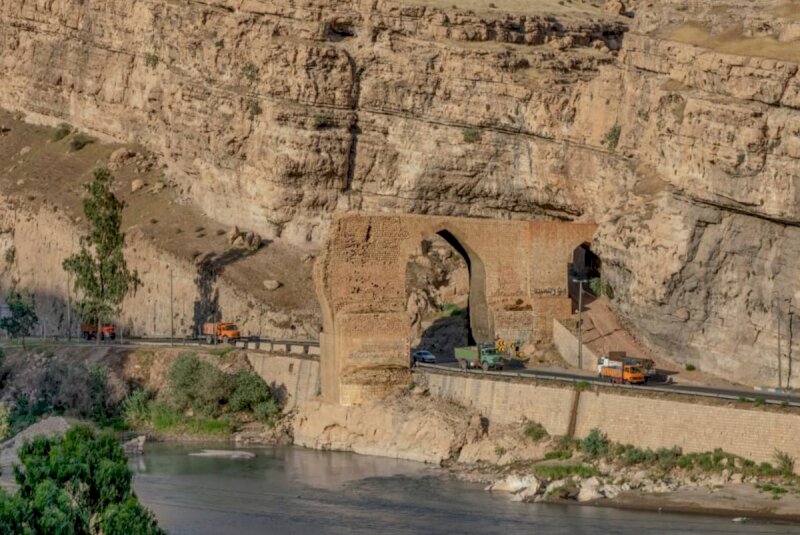Ruins of magnificent Sassanid bridge strengthened by team of restorers

TEHRAN – A restoration project has recently been completed on the ancient arch bridge of Pol-e Dokhtar (literally meaning Girl Bridge) in the western province of Lorestan, the provincial tourism chief has said.
Parts of the Sassanid-era (224 CE to 651) monument including its deck and side arches, which were damaged by heavy flooding in 2019, were renovated and strengthened, Seyyed Amin Qasemi announced on Thursday.
A budget of over 1.5 billion rials ($35,700 at the official exchange rate of 42,000 rials per dollar) was allocated to the project, the official added.
The restoration was carried out using traditional materials and according to the original structure of the magnificent bridge, he noted.
With 270 meters long, Pol-e Dokhtar was built on the remains of an earlier structure dating back to the Achaemenid era (c. 550 – 330 BC).
Only one 18-meter-high arch has remained intact from the original structure, which was a passage between two ancient cities of Shapur Khast and Jundi Shapur.
Inscribed on the national cultural heritage list, the mudbrick bridge has been restored several times up to the moment.
In 2019, days of devastating flooding and heavy rain inflicted damage to tens of cultural heritage sites in Lorestan; for instance, it washed away parts of a historic hill, on top of which the famed Falak-ol-Aflak Castle is nested.
Lorestan, which is a region of raw beauty, was inhabited by Iranian Indo-European peoples, including the Medes, c. 1000 BC. Cimmerians and Scythians intermittently ruled the region from about 700 to 625 BC. The Luristan Bronzes noted for their eclectic array of Assyrian, Babylonian, and Iranian artistic motifs, date from this turbulent period.
Lorestan was incorporated into the growing Achaemenid Empire in about 540 BC and successively was part of the Seleucid, Parthian, and Sassanid dynasties.
The Sassanid era is of very high importance in the history of Iran. Under Sassanids, Persian art and architecture experienced a general renaissance. The Sassanid archaeological landscape also represents a highly efficient system of land use and strategic utilization of natural topography in the creation of the earliest cultural centers of the Sassanid civilization.
ABU/AFM

Leave a Comment